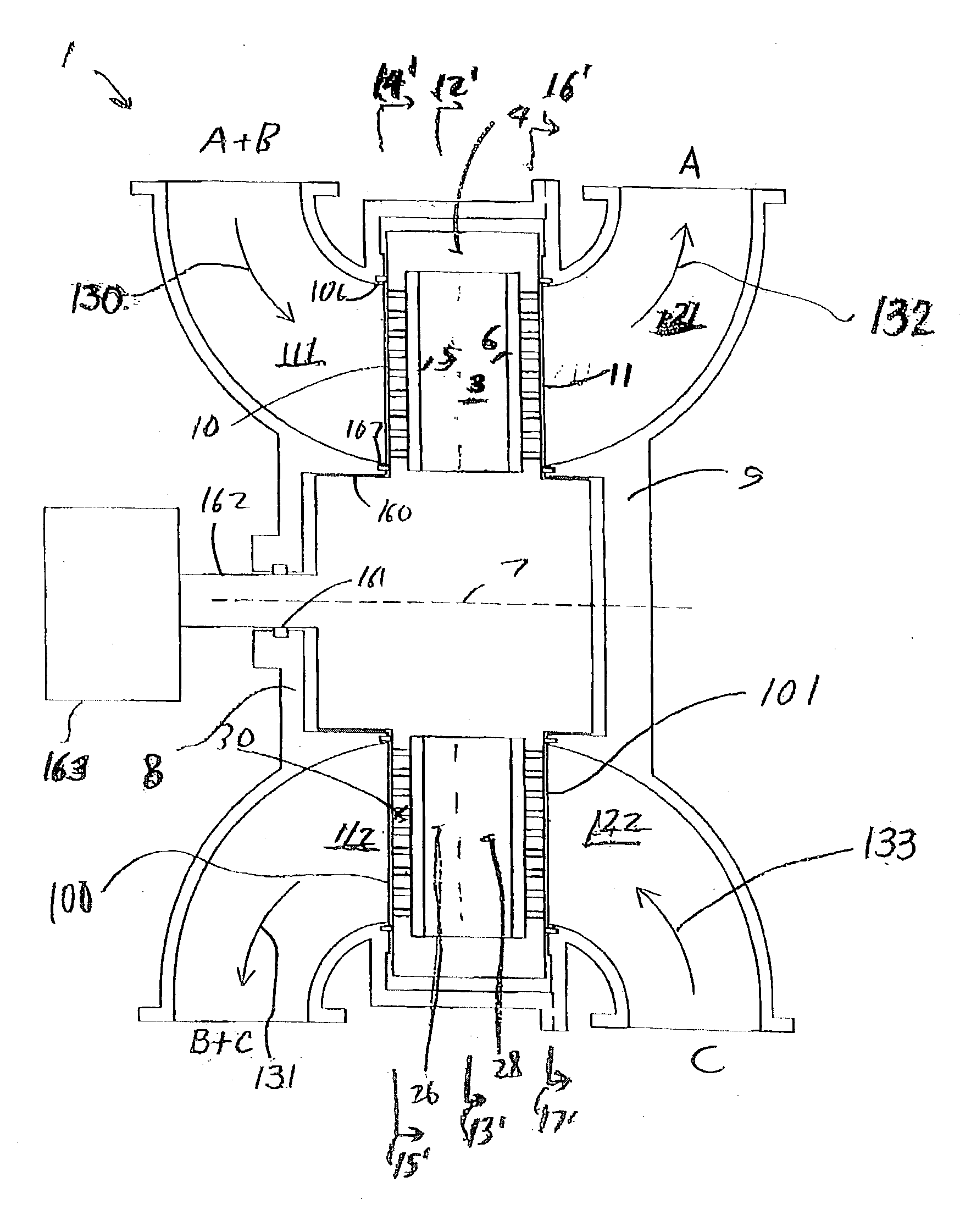Hydrogen recycle for solid oxide fuel cell
a fuel cell and solid oxide technology, applied in the direction of electrochemical generators, separation processes, dispersed particle separation, etc., can solve the problems of degrading the electrical efficiency of the system, affecting the voltage efficiency of the cell, so as to achieve a high ratio of h2 to h2o, improve the effect of voltage efficiency and outpu
- Summary
- Abstract
- Description
- Claims
- Application Information
AI Technical Summary
Benefits of technology
Problems solved by technology
Method used
Image
Examples
Embodiment Construction
[0058] FIGS. 1-4
[0059] A hydrogen-enrichment rotary adsorption module with displacement purge regeneration is described below in connection with FIGS. 1-4. As used herein, a "rotary adsorption module" includes, but is not limited to, either a device wherein an array of adsorbers rotates relative to a fixed valve face or stator or a device wherein the valve face or stator rotates relative to an array of adsorbers. Illustrated embodiments have the adsorbers mounted in a rotor, with the rotor in a housing which is a stator with fixed valve faces.
[0060] FIG. 1 shows a rotary adsorption module 1, which includes a number "N" of adsorbers 3 or adsorber channels 3 in adsorber housing body 4. Each adsorber has a first end 5 and a second end 6, with a flow path therebetween contacting an adsorbent over which a gas component B is more readily adsorbed relative to a component A and a component C which are less readily adsorbed. The adsorbers are deployed in an axisymmetric array about axis 7 of...
PUM
| Property | Measurement | Unit |
|---|---|---|
| operating temperature | aaaaa | aaaaa |
| temperature | aaaaa | aaaaa |
| temperature | aaaaa | aaaaa |
Abstract
Description
Claims
Application Information
 Login to View More
Login to View More - R&D
- Intellectual Property
- Life Sciences
- Materials
- Tech Scout
- Unparalleled Data Quality
- Higher Quality Content
- 60% Fewer Hallucinations
Browse by: Latest US Patents, China's latest patents, Technical Efficacy Thesaurus, Application Domain, Technology Topic, Popular Technical Reports.
© 2025 PatSnap. All rights reserved.Legal|Privacy policy|Modern Slavery Act Transparency Statement|Sitemap|About US| Contact US: help@patsnap.com



